Affiliate disclosure: This post may contain affiliate links. Please see our Privacy Policy.
Apples have been a staple wintertime crop for hundreds of years, and that goes well beyond applesauce. Canning and freezing are relatively new discoveries, and our ancestors developed a number of unique ways to preserve apples until the spring crops came in.
Up here in Vermont stored fruits, primarily apples, satisfied the fruit needs of families from October to the first honeyberries in Mid-June. Even without a root cellar, there are so many ways to preserve apples for long-term enjoyment.
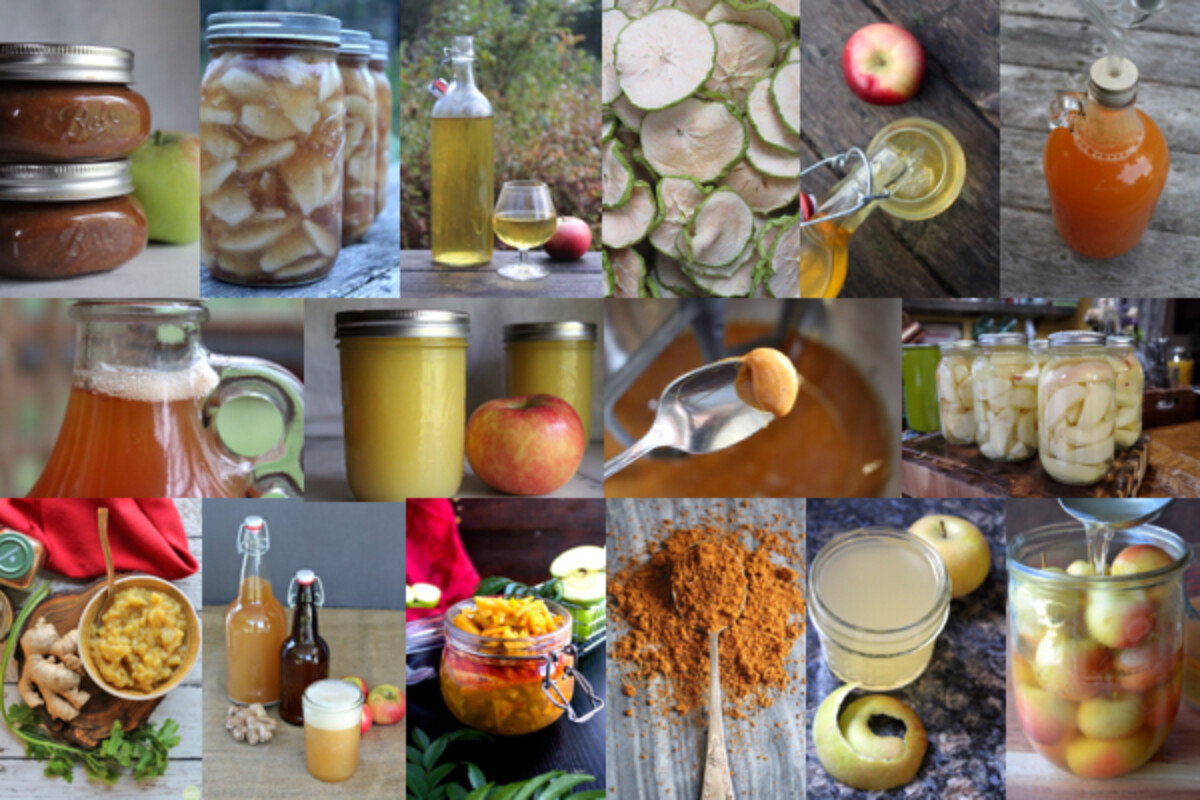
Table of Contents
- Historical Apple Preservation Techniques
- Root Cellaring
- Dehydrated Apples
- Storing Apples on the Tree
- Cider Syrup
- Cider Jelly
- Apple Butter
- Apple Fruit Leather
- Apple Canning Recipes
- Applesauce
- Canned Apple Slices
- Apple Pie Filling
- Canning Whole Apples
- Apple Pickles
- Apple Chutney
- Apple Jam
- Apple Jelly
- Canning Fresh Cider
- Apple Salsa
- Apple Fermentation Recipes
- Apple Cider Vinegar
- Hard Cider
- Apple Wine
- Ice Wine
- Apple Jack
- Apple Ginger Beer
- Apple Shrub
- Brined Apples
- Apple Kraut
- Other Ways to Preserve Apples
- Apple Cordial, Apple Brandy & Apple Moonshine
- Freezing Apples
- Apple sugar
- Apple Cider Caramel
- Freeze Dried Apples
- Food Preservation Inspiration
When the apple harvest comes in, it can be a bit intimidating. A single standard apple tree can produce 30 bushels of apples in a year, and even dwarf trees can produce 3 to 6 bushels each. A single bushel is 42lbs…that’s a lot of apples.
Our permaculture orchard has 20+ apple trees, some just a few years old, but several are mature adult trees. Every fall we find ourselves scrambling to find enough ways to preserve apples, so it’s about time that I collect them all in one place.
Root cellaring, hard cider and various canning methods are my go to techniques, but there are so many options for preserving apples, both historical and modern.
Historical Apple Preservation Techniques
Long before modern preservation methods like canning or freezing, people were preserving apples like their life depended on it. Largely because it actually did. Having a good supply of stored food, especially nutrient-rich fruit, is one of the things that allows people to colonize northern areas with harsh winters.
Some historical ways to preserve apples have been modified for our modern kitchens. Apple butter, for example, dates back to the middle ages, hundreds of years before the advent of canning. These days, it’s often made in an electric slow cooker and canned instead.
Nonetheless, I’ve included both apple butter and apple cider jelly in this section because they pre-date canning as a preservation method.
Root Cellaring
By far the easiest way to preserve apples, many varieties of apples will keep for months in a cold, humid environment. Modern refrigeration is basically a more controlled version of this, and many of the apples you eat in the spring and early summer were just last fall’s apples warehoused in cold storage overwinter.
Not all apple varieties are good for storage, and some won’t keep more than a few weeks even in the best conditions. Summer apples, like yellow transparent, ripen early tend to spoil very quickly. As a rule, the latest ripening apples tend to be the best storage apples.
Good storage apple varieties don’t need anything fancy to keep, and our homegrown newton pippins keep for over a year in our 50-degree basement. Just pick them as late as possible, usually late October, and then wrap them in a newspaper before placing them in a box in the basement.
We’ve eaten newton pippins 14 months after harvest, made into a pie for Christmas more than a year after they were picked!
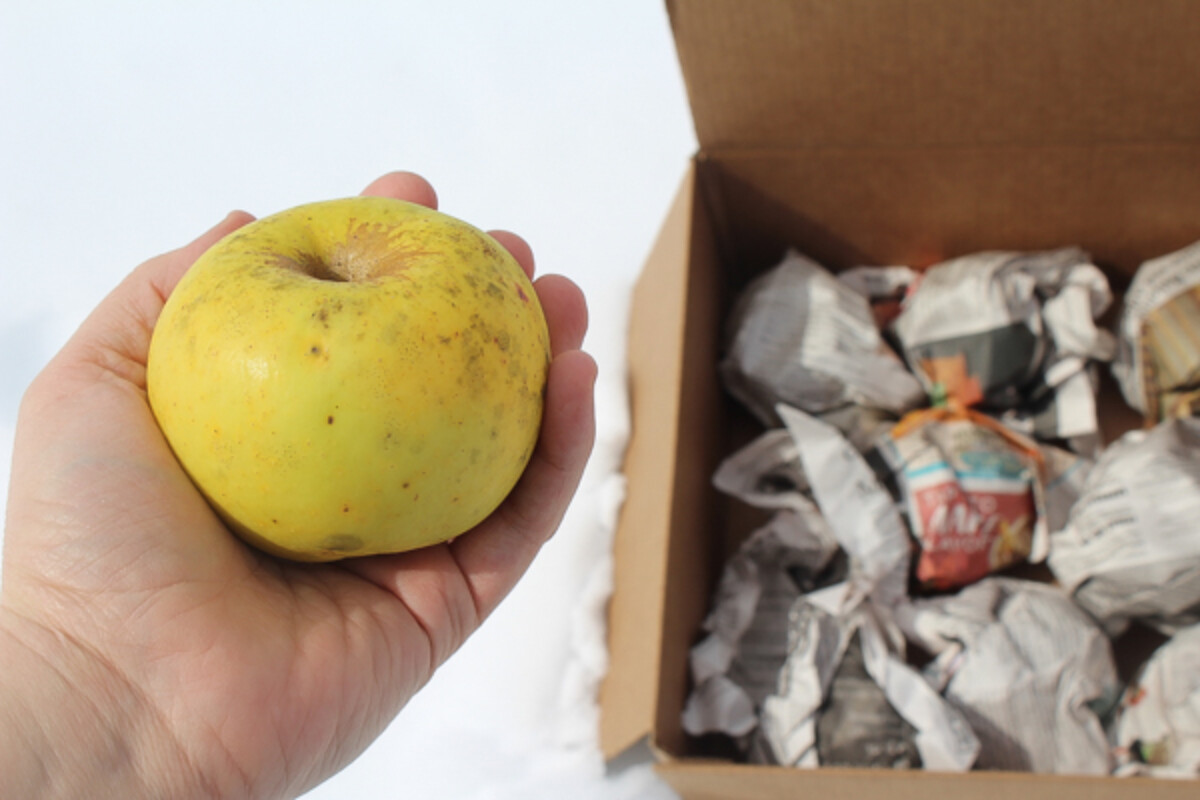
Dehydrated Apples
While you can still find dried apple chips in the store today, dehydrating apples for preservation is a very old method. It was so common, in fact, that there are actually a number of heirloom apple varieties grown specifically for drying.
Maiden’s blush, for example, is a sweet mild apple fresh, but its flavor improves dramatically when dried. It takes on a delicate floral aroma, and delightful mild, creamy sweetness.
The flesh itself is non-browning, which means that the apple rings dry to a snow-white color even without a modern dehydrator. Old New England homesteads often have one planted somewhere, and here in Vermont, they’re often available at autumn farmer’s markets.
Historically apples would have been dried in the sun or by the woodstove, but the process is a lot more efficient with a modern food dehydrator. It’s easy to do following these instructions for dehydrating apples. It takes about 2 1/2 pounds of apples to fill a quart mason jar with dried apple rings, but they pack much better if you vacuum seal them.
Solar oven apple chips are also a great option and speed up natural sun drying in cooler climates.
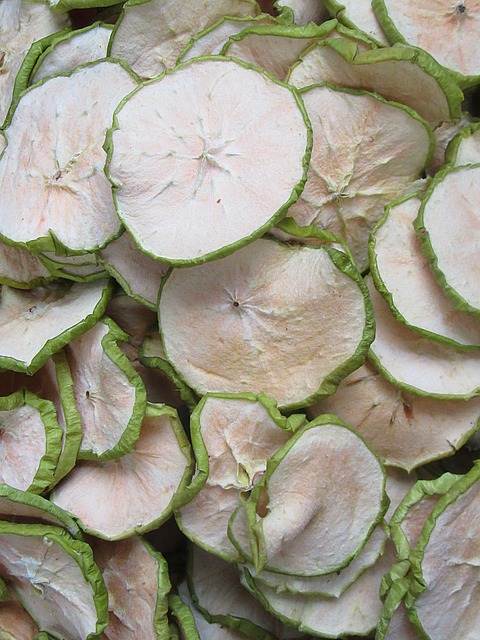
Storing Apples on the Tree
Sometimes the best way to preserve apples is to store them right on the tree. Or at least, so people in relatively mild climates believed in times past. England happens to have such a climate, and late-ripening apples were picked in early November and hung in cloth bags right on the tree.
This method kept them cool and moist, as November in England is basically good root storage conditions for winter apple varieties. Cloth bags provide good air flow, which helps maintain quality.
According to Scott Farm, an Heirloom Orchard in Southern Vermont, a variety known as D’arcy Spice was traditionally preserved in this method…at least for a short while.
It’s described as “A green, russeted apple originally from Essex, England. It has a crisp, aromatic, nutmeg flavor. This apple was traditionally picked on Guy Fawkes Day and hung in cloth bags from the tree limbs until December. One of our favorite apples here, the last apple we pick in the harvest season.”
Cider Syrup
In many ways, cider syrup is just like maple syrup but made from boiled apple cider instead. It’s actually often called “boiled cider” since that’s exactly what it is. Like maple syrup, cider syrup is shelf-stable and will keep for extended periods without refrigeration or special treatment.
If you’d like to try it, there’s actually a local VT company that bottles and sells cider syrup. It’s popular enough around here that the King Arthur Flour blog actually includes it in a number of their fall recipes, including apple cider donuts and this boiled cider glaze for bundt cakes.
Maple syrup is the concentrated sap of maple trees, and it takes 40 gallons of sap to make a gallon of maple syrup. Cider syrup, on the other hand, is only 7 to 1. You don’t need any fancy equipment to make it, just start with any amount of fresh apple cider (without additives). Then start cooking it until it reaches 1/7th the initial volume.
Making marks on a stick or bamboo skewer helps in this process, or you can periodically measure.

Cider Jelly
This is where the line between old-time apple preservation recipes and more modern caning recipes begins to blur. You’ve probably heard of apple jelly or crabapple jelly, but they’re very different than traditional cider jelly. In fact, it’s hard to find any recipes for this old-time apple preserving method online.
Search for cider jelly, and you’ll get plenty of recipes that start with cider and then add a boatload of pectin and sugar to make it quickly gel. Traditional cider jelly is different, and the ONLY ingredient is apple cider.
You cook it and keep cooking it, and then you cook it some more. It’s a lot like cider syrup, but instead of a 1/7th concentration, it’s cooked further to a 1/9th concentration.
Many years ago I had the opportunity to meet the owner of Woods Cider Mill, which still makes traditional cider jelly. He told me that the original recipe, going back to the 1800s, doesn’t involve canning at all and the concentrated cider jelly is completely shelf-stable (even after opening).
These days, I’m sure they actually can it in practice to meet with NCFP guidelines in selling food products. Nonetheless, the jar still says “needs no refrigeration” instead of the standard “refrigerate after opening” that’s found on most jellies.
According to woods cider mill, “Our family has been Cider Jelly since 1882. We grind and press the apples on the farm’s original screw press to make sweet cider and evaporate it in a wood-fired stainless steel evaporator to make cider jelly. Cider Jelly is concentrated about 9 to 1 and is just concentrated cider with nothing added, no preservatives or sweeteners. The cider from about 30 to 50 apples is concentrated into every pound of cider jelly.”
Cider jelly is available to purchase here if you’d like to just taste it, or you can start with fresh cider and set it to cook on low until it’s reduced to 1/9th the original volume (it takes a long time).
Apple Butter
A bit like applesauce, but only a bit, apple butter is sweet, rich and thick. Slow-cooked for many hours, often days, the natural sugars in the apples caramelize into a rich brown spread.
The tradition of making apple butter goes all the way back to the middle ages, long before home canning was developed as a method of food preservation. The apples would be cooked on a copper kettle over a very low fire for at least 10-12 hours, stirring with a long wooden paddle. The low slow heat would cause natural apple sugars to caramelize, resulting in a deep brown color, and rich caramel flavor.
The high acid, high sugar nature of apple butter would work to preserve apples without modern technology or canning, but they wouldn’t keep forever this way. You’d still need a tight-sealing container and a cool place to store it, like a root cellar or basement.
These days, a crockpot does the job with a lot less work, and canning it in a water bath canner extends the shelf life dramatically.
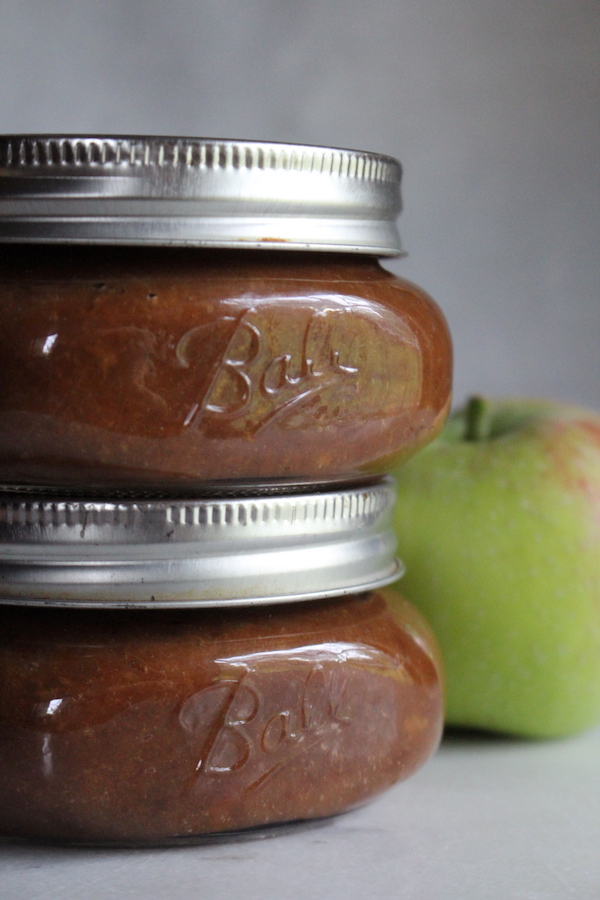
Apple Fruit Leather
Often actually made with apple butter, the tradition of dried fruit leather goes back a long way. Start with either applesauce or apple butter spread thin on a tray. Then dehydrate in the sun, a dehydrator or the oven on the lowest setting.
Depending on the method, you’ll have a shelf-stable apple fruit leather in as little as 4 hours.
For a little more flavor, try mixing in other fruits and veggies, like this sweet potato apple fruit leather or blackberry apple fruit leather.
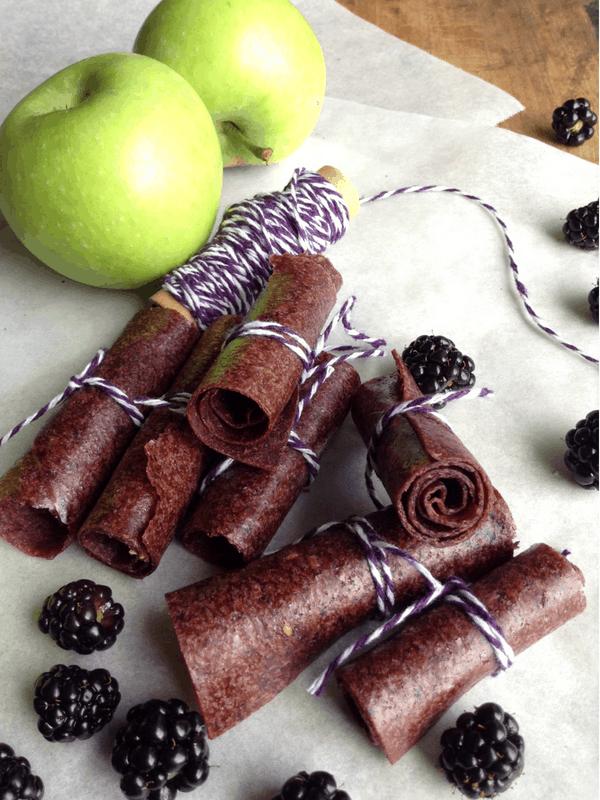
Apple Canning Recipes
Canning apples gives you a surprising number of choices. While applesauce may be the first thing that comes to mind, there are so many ways to can apples!
Apple butter, cider syrup, and cider jelly are all commonly canned today using a water bath canner, but they’re listed above in “historical” ways to preserve apples because they’ve been around since before canning was invented. Canning extends their shelf life even more, but the original preservation method is in the creation of the flavorful apple preserve in the first place.
Applesauce
These days, when people think about putting up a big apple harvest, their minds go to applesauce. Canning applesauce is really easy, and after a short cook, the apples are ready to be processed in a water bath canner for just 15 minutes (pints) or 20 minutes (quarts).
The process is made a bit simpler if you make applesauce with a food mill. Just coarsely chop the apples, no peeling or seeding required. After a short cook, everything goes through the food mill and a smooth sauce comes out the other end.
We’ve canned 50+ pints of applesauce in under 2 hours using the food mill method.
In truth, applesauce doesn’t need anything but apples. That said, if you want a real treat, try making caramel applesauce…
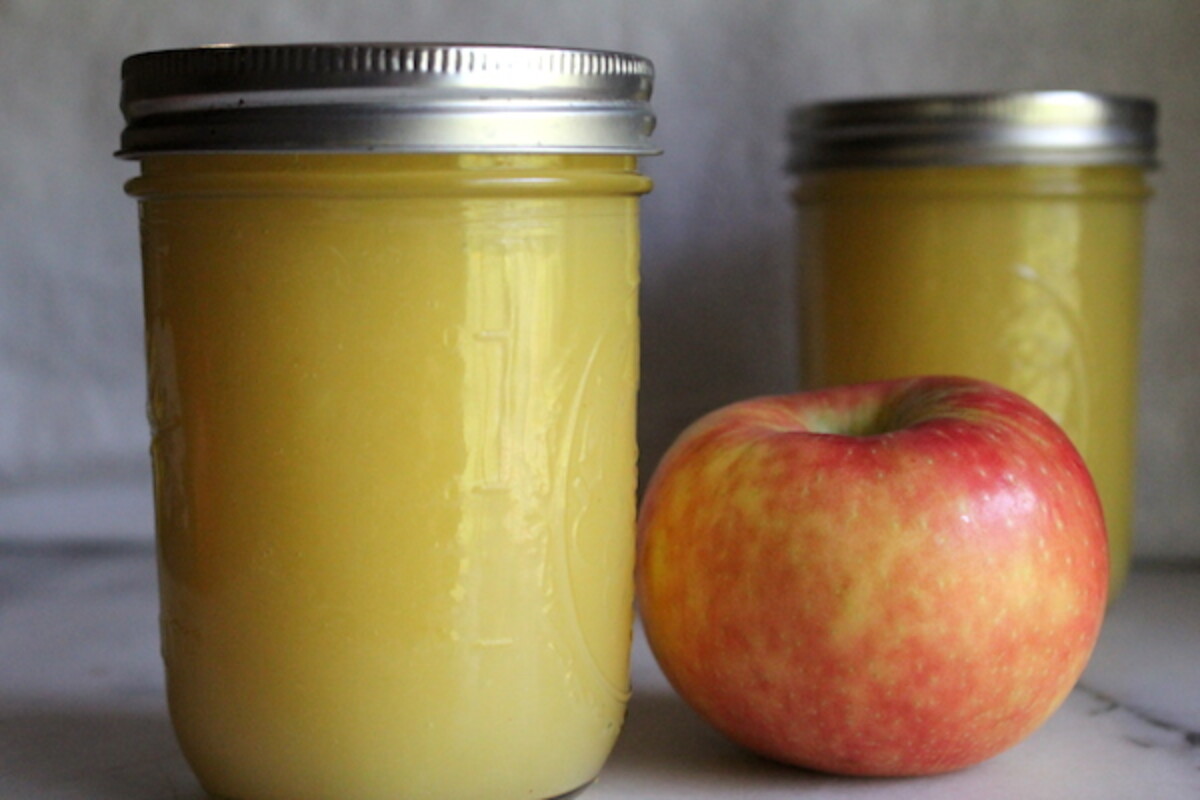
Canned Apple Slices
If you want a simple apple canning recipe, then apple slices are about as easy as it gets. You don’t even have to cook them into applesauce, just slice them up, pack them in syrup and can away.
Canned apple slices are really versatile, and you can add a bit of thickener to make a pie, or simply strain them for use in all manner of recipes. Toss them on a salad, add them to a pork loin roast, or just eat them right out of the jar.
The process involves blanching the apples in water first, to help preserve quality during canning. That blanching water is full of flavor, and often discarded. If you’re truly into no waste, that waste apple water can be made into apple cider concentrate for canning too.
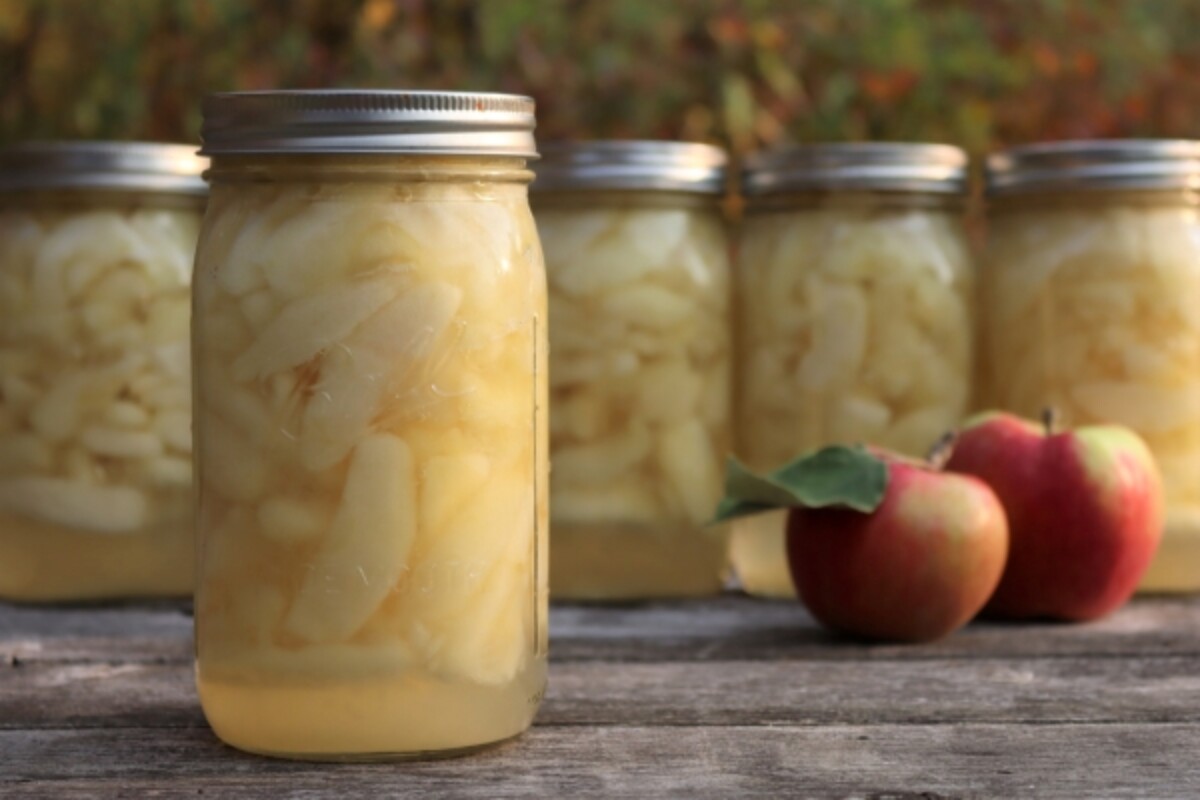
Apple Pie Filling
While canned apples are versatile, I usually can apple pie filling instead. It’s ready to go, no thickening required. If I want a fresh apple for a mid-winter recipe, I’ll go to our basement. But when I want a pie, these beautiful jars are ready to go in a moment’s notice.
Saves a lot of time on busy weeknights, and I get to can my pie and eat it too!
(The same trick works for cherry pie filling and peach pie filling, so you’ve got plenty of choices…)
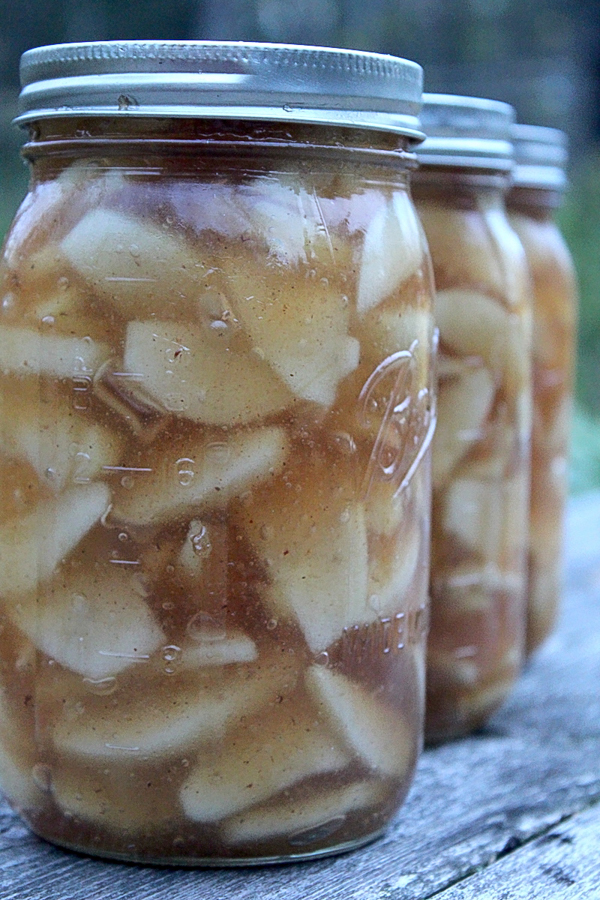
Canning Whole Apples
While canning apple slices may be more versatile, I love the novelty of just canning whole apples. Historically, many apple varieties were quite small. Heirloom apple varieties like Wickson, pomme gris or lady apples were sweet, flavorful and super tiny.
Since you’re canning these tiny apples in a spiced sugar syrup, crabapples work just as well and the sugars infuse over time to create a real treat.
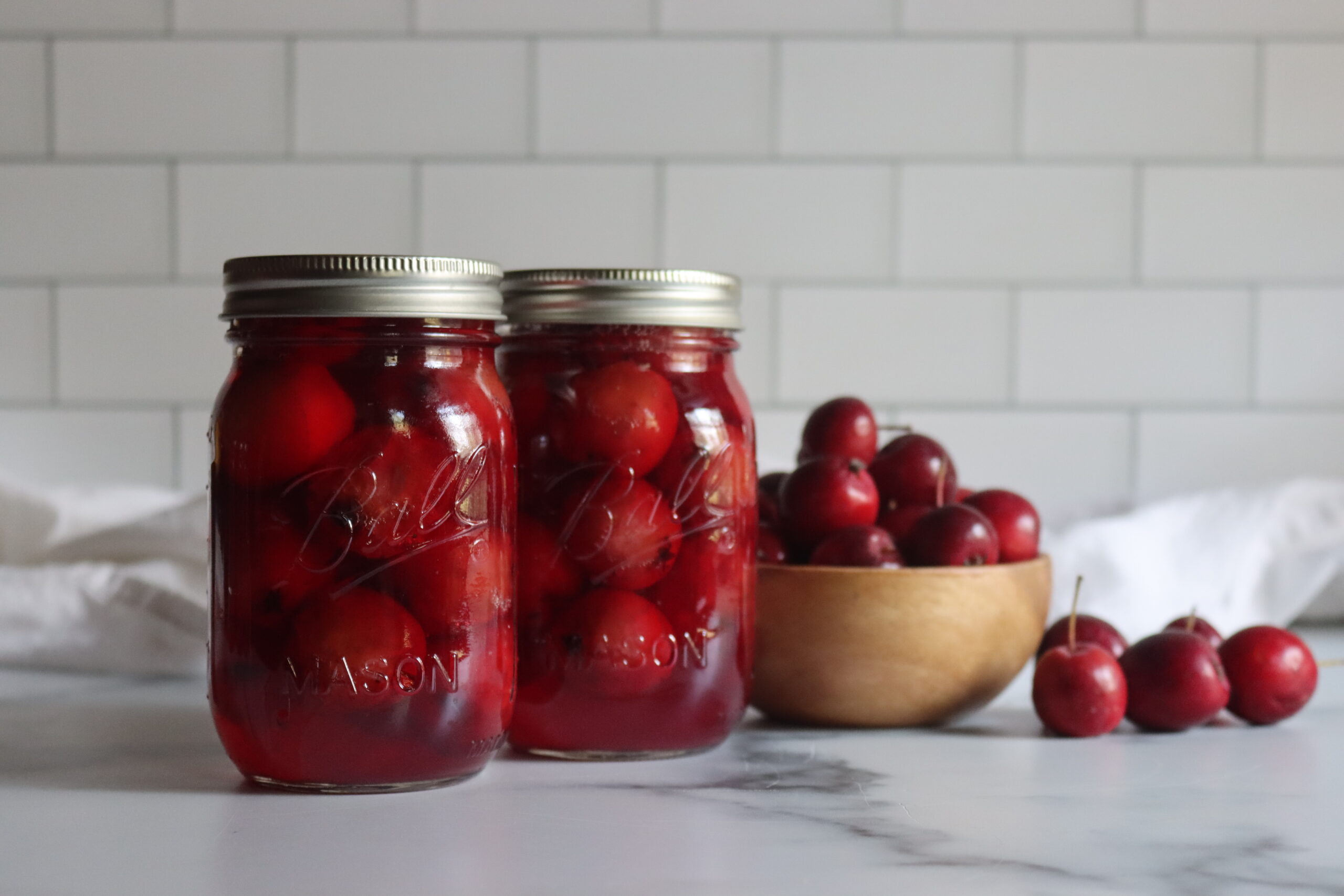
Apple Pickles
Pickles aren’t just for cucumbers, and apples can be pickled in the same way. Apples are naturally much more acidic than cucumbers, and safe for canning without added vinegar. That means the amount of vinegar added is all for flavor, to create a pickle as a tangy topping for all manner of dishes.
Slice the apples into rings and season with maple and star anise for a warm, comforting pickle like they do in this recipe from food52. Alternately, dice the apples and mix with lime and chillis for a tasty taco topping, as they do in this recipe from tasting table.
The most unique recipe I’ve seen yet though comes from Nish Kitchen, which grates the apples and then pickles them in curry spices.
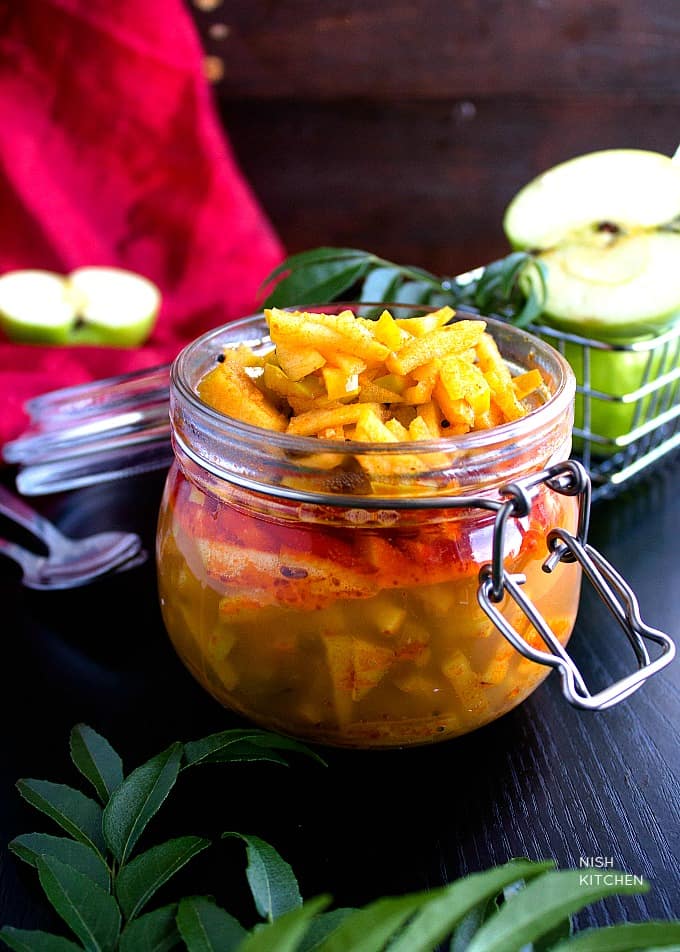
Apple Chutney
That last apple pickle recipe sets this next one up nicely. Apple chutney isn’t that much different than apple pickles, other than spices and intent. A chutney would never be eaten as a pickle right out of the jar, it’s meant to be used as a flavor-enhancing condiment for Indian cuisine.
Modern fusion cuisine means that apple chutney doesn’t have to have Indian spicing. This pork tenderloin with vanilla apple chutney looks amazing and takes a traditional Indian condiment in a very different direction. Similarly, cranberry apple chutney is just right for an American holiday table.
If you want to keep it traditional, try this simple recipe for apple chutney from Cadry’s Kitchen. Though she doesn’t include canning instructions, this recipe would be canned in the same manner as applesauce.
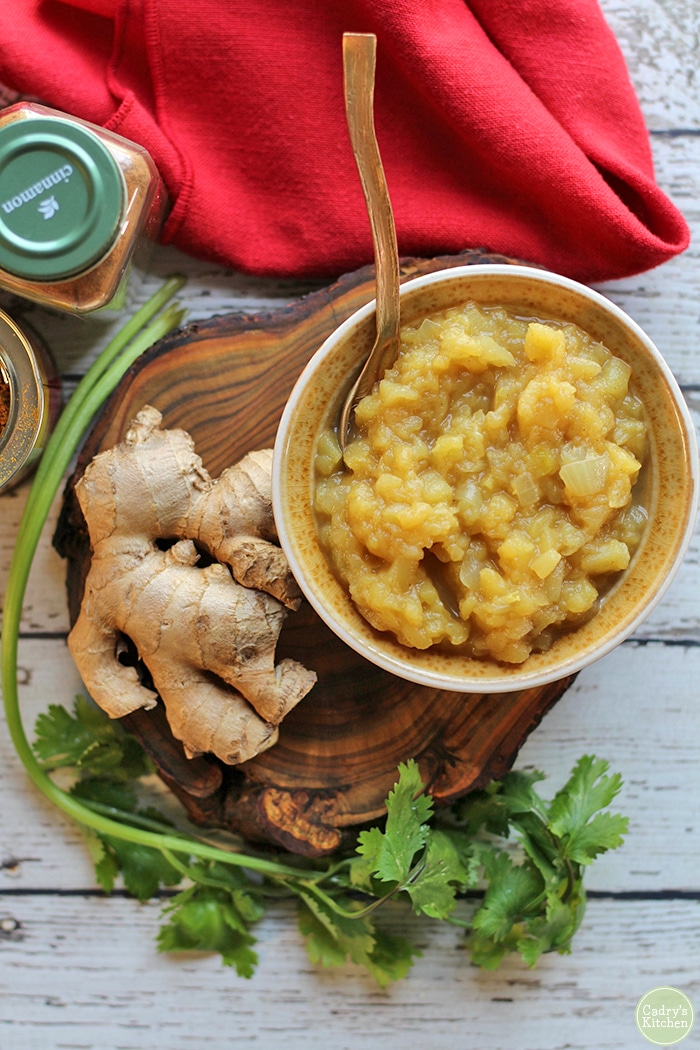
Apple Jam
While apple jelly is well known, somehow old-fashioned apple jam has gone by the wayside. The process starts by macerating diced apples in sugar, which draws out their liquid into a syrup and firms up the texture.
The apples and syrup are then cooked into a homemade jam without added pectin, but with loads of apple flavor.
Pear jam uses basically the same recipe, but with pears obviously.
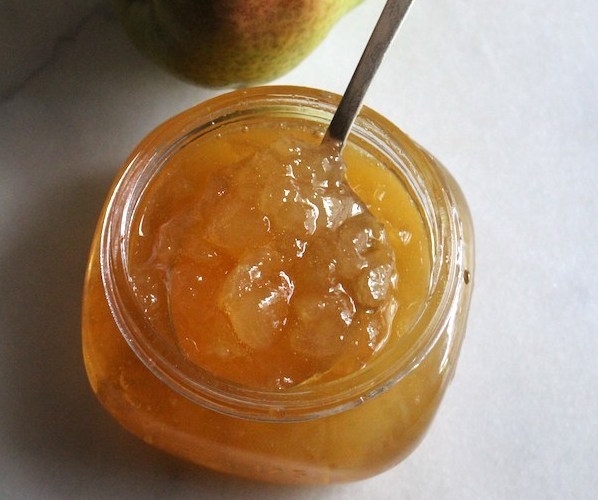
Apple Jelly
A bit different than cider jelly which only has one ingredient, apple jelly is a more modern recipe that cooks apples in water to extract their flavor and pectin. The apples are strained out and sugar is added to finish the jelly.
Most commonly, this is made as crabapple jelly because it’s a great way to use up crabapples that have few other edible uses.
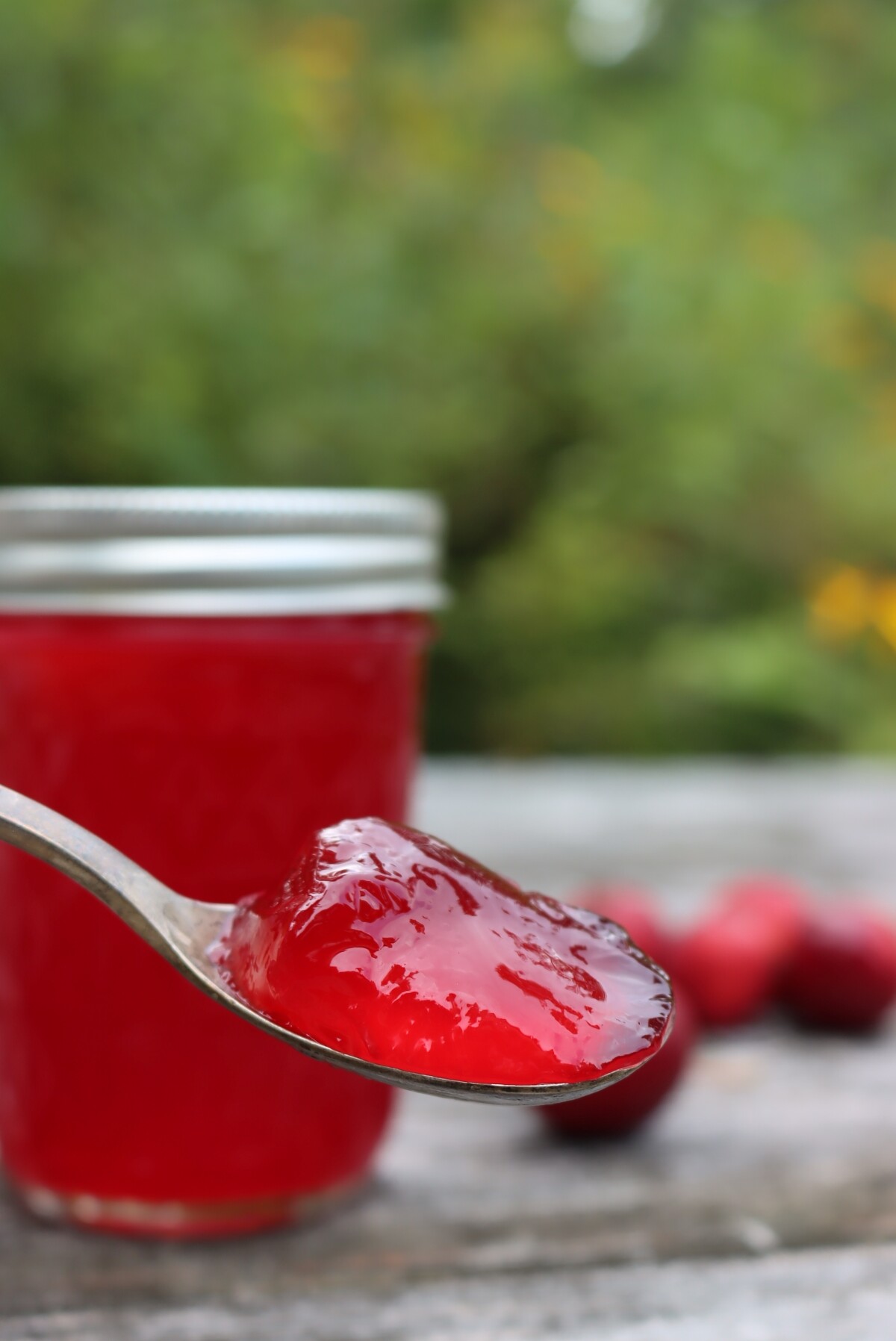
Canning Fresh Cider
One of my favorite ways to preserve apples is by canning apple cider at home. I love mulled cider all winter long, and after we press apples on our double barrel cider press, I often can up the whole batch in quart jars for the winter. Lacking a press, this simple DIY cider press gets the job done for free.
The whole canning process is really quick, since the cider is full of sugar and acid. Some of the solids fall out of suspension to the bottom of the jar during canning, but it still has a characteristic “apple cider” taste that’s very unlike storebought apple juice.
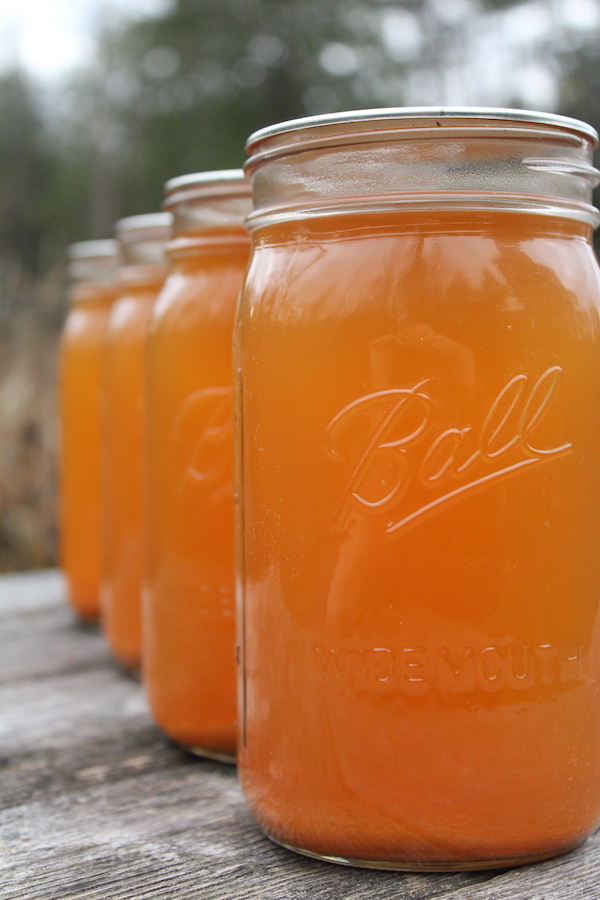
Apple Salsa
Perhaps not the first thing that comes to mind when you’re canning apples, but apple salsa is really tasty. Apples are crunchy, sweet and acidic which makes them the perfect fresh salsa base.
Canning apple salsa removes that crisp crunch, but the flavor is still incredible.
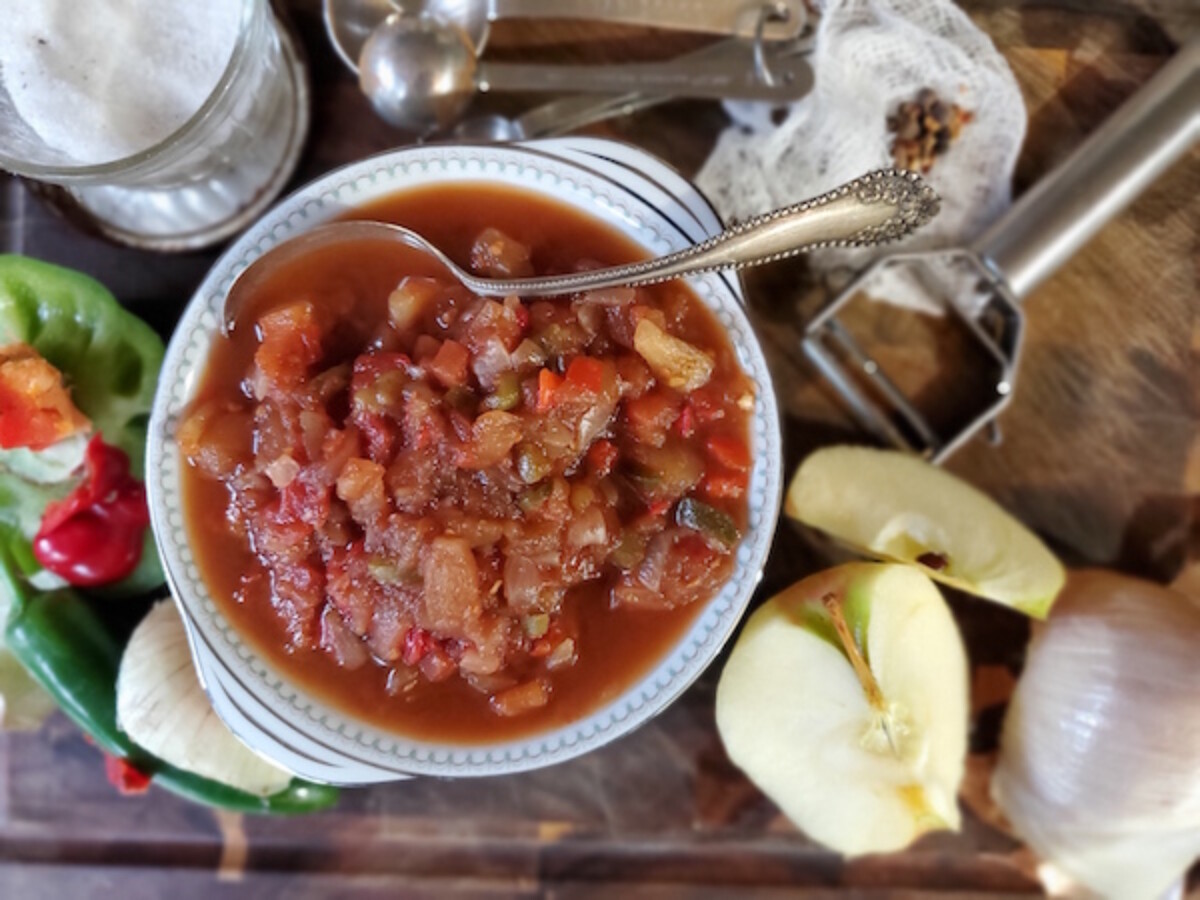
Apple Fermentation Recipes
Fermentation is an age-old practice, and one of the very first methods of food preservation. Fermentation doesn’t always mean alcohol, and the end result will depend on the organism that’s fermenting the apples. Yeasts create alcohol, but other preservation bacteria including lactobacilli and acetic acid bacteria will create different ferments.
Apple Cider Vinegar
Most recipes for apple cider vinegar found online use a modified process that doesn’t actually have any apple cider included. Apple scrap vinegar takes chopped apples or apple cores/peels, adds a bit of sugar and a live vinegar culture. The mixture ends up as an apple-flavored vinegar, but a lot of the vinegar itself comes from the fermentation of the added cane sugar.
That method is easier since you don’t need a cider press and you can just chop masses of whole apples.
If you want to make real cider vinegar, just place raw, fresh-pressed cider in a bucket and cover it with a towel. The natural yeasts present on the apples will cause it to ferment into hard cider.
Usually, hard cider has a one-way valve that allows CO2 to escape but keeps vinegar-producing bacteria out. Since it’s an open ferment in a bucket, there’s nothing to stop it from turning to vinegar.
Thus, it’ll more or less just become apple cider vinegar on its own. (For a bit of extra insurance, it always helps to add a bit of store-bought raw cider vinegar with the “mother” culture present to ensure it starts off on the right track.)
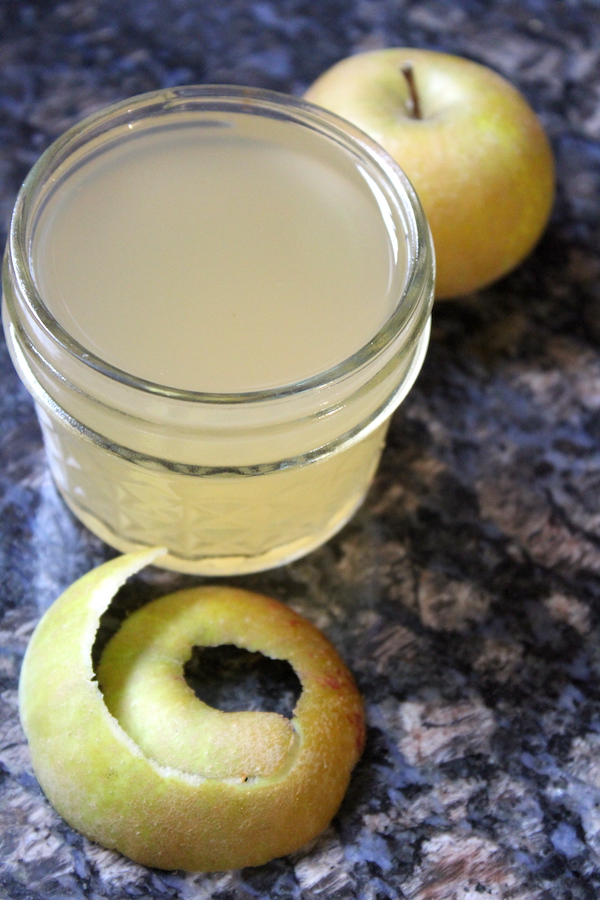
Hard Cider
The craft of making hard cider is an art form, plain and simple. Few apple varieties have all the characteristics needed to make a good hard cider, and it takes an expert hand at blending the right juices together.
Sugar, aroma, acid, and tannin varieties all come together to create a juice blend for hard cider. (The same is true when you use pears to make pear cider or “perry.”)
These days, every part of the process is controlled and special commercial cider yeasts are used. Historically, the apple varieties would have been carefully selected, but the final ferment would have taken place with the wild yeast present on the apples themselves.
Traditionally, hard cider orchards kept tart, astringent apples that were no good for eating but provided the necessary elements for hard cider production. While you can make hard cider to preserve just about any type of apples, making good hard cider means having the right apples on hand.
Many wild apples still have the right characteristics, but if you’re looking for a way to preserve homegrown apples, apple wine is actually a better bet.
If you do end up making hard cider, you can take it one step further and try your hand at hard cider jelly for a really unique spread.

Apple Wine
Believe it or not, apple wine is really different from hard cider. While hard cider relies on carefully balancing sweet/acid/tannin elements in various types of apples to craft the perfect juice to ferment…apple wine just uses any old juice. That apple juice is then modified using winemaking chemicals, and tanning powder, acid blend, and various other additives transform a simple apple juice base into a well-balanced apple wine.
Unless you have access to cider apple varieties, I’d suggest trying apple wine instead. It’s hard to find good tannin apples these days since hard cider orchards have largely gone by the wayside.
While sugar and winemaking additives are the most common method, you can make an approximation using maple or honey, black tea for tannin, and raisins to balance the nutrients. This alcoholic maple syrup cider is a great example of that method.
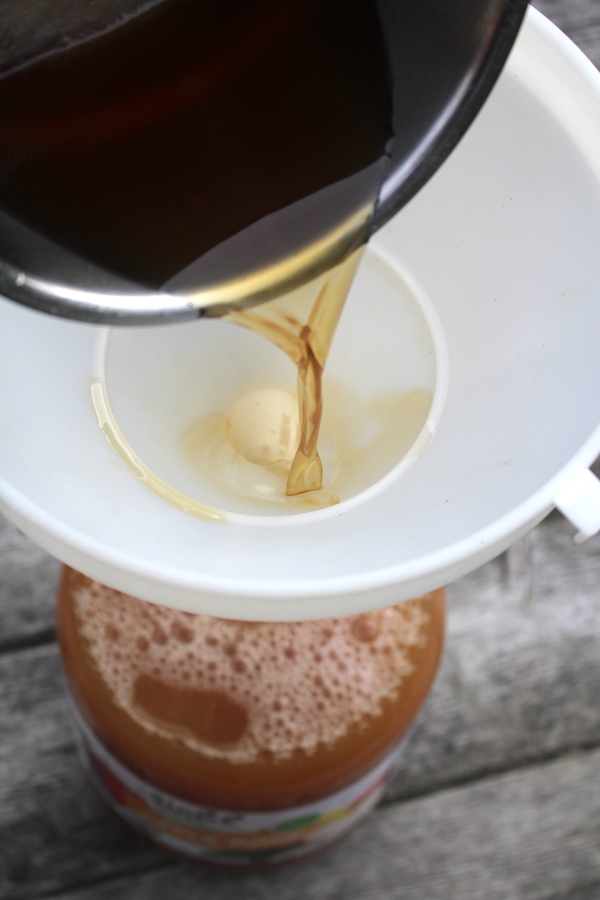
Ice Wine
Yet another alcoholic fermented apple drink, ice wine is quite a bit different than either hard cider or apple wine. Generally, hard cider and apple wine are relatively low alcohol and quite dry. The yeasts consume most of the available sugars, leaving a dry beverage that’s around 7% alcohol.
Ice wine is a bit different. It starts by freezing either apples or apple cider to concentrate their sugars. The apples may be allowed to freeze on the tree, and then they’re pressed partially frozen.
Or the pressed juice may be frozen and the ice removed. Either way, it results in a highly concentrated juice that produces a thick, syrup-y wine.
Both more alcoholic and sweeter than the other apple ferments, ice wine is meant to be consumed in small quantities with dessert.
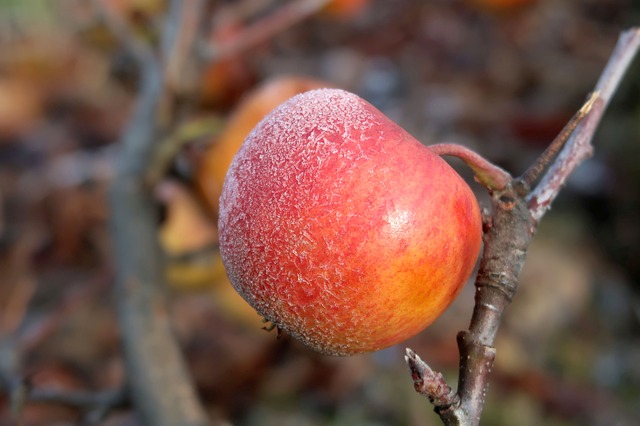
Apple Jack
Applejack is a drink that’s made by concentrating hard cider or apple wine. Unlike ice wine, which is concentrated before fermentation, applejack is freeze-distilled after fermentation.
The alcohol won’t freeze, but the water will. That means removing the ice serves to cold distill the finished beverage.
Since applejack is easy to make and doesn’t require any specialized equipment, it was a popular drink in colonial times. The higher alcohol content meant that it kept better than hard cider, and cold New England winters were perfect for making the drink.
While applejack was popular historically, it’s only questionably legal today. Since it’s technically a form of distillation, some strict readings of the law could make it illegal.
Beyond the legality, applejack may not be safe:
“Besides concentrating flavors, it will also concentrate methanol, fusel alcohol, and other impurities. True distillation separates these out, so isn’t a concern. Methanol is highly toxic and unfit for consumption. This may be why drinking large amounts of applejack has such a reputation of being very harsh on your system and causing horrible hangovers. It is even thought to cause “apple palsy” which can cause blindness.”
Apple Ginger Beer
Unlike hard cider and apple wine which ferment to alcohol with yeast, to make ginger beer you’ll need a ginger bug. Cultured symbiotic bacteria on the outside of organic ginger, apple ginger beer is more of a soda than a beer.
The whole process is pretty quick (as far as fermentation goes), and only requires 5-7 days from start to finish. It’s only lightly fermented and it’s usually suitable for the whole family to drink.
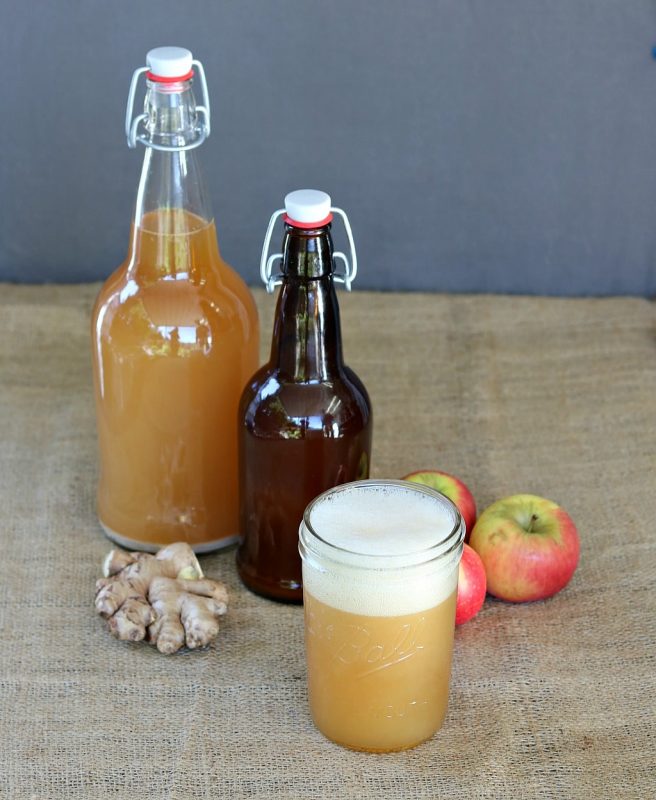
Apple Shrub
An old-school preservation method that’s gaining popularity again, shrubs are basically drinking vinegars. According to Food52:
“Shrubs or drinking vinegars (as they’ve more recently become known) are a kind of preserve in which fruit is submerged in a combination of vinegar and sugar and allowed to steep for a time. Eventually, you strain out the fruit solids (pressing firmly to remove the juice) so that you’re left with a sweet, highly acidic, fruity concentrate. The shrub can then be used in cocktails, stirred into sparkling water or whisked into salad dressings.
…shrubs were originally created as a way to preserve a fruit harvest for year-long consumption…
The traditional ratio for shrubs is one part sugar, one part vinegar, and one part fruit. However, because apples are so sweet all on their own, when I’m working with them, I ease back on the sugar a little and increase the amount of fruit to create the right balance.”
Ready to make your own? Try this spiced apple shrub!
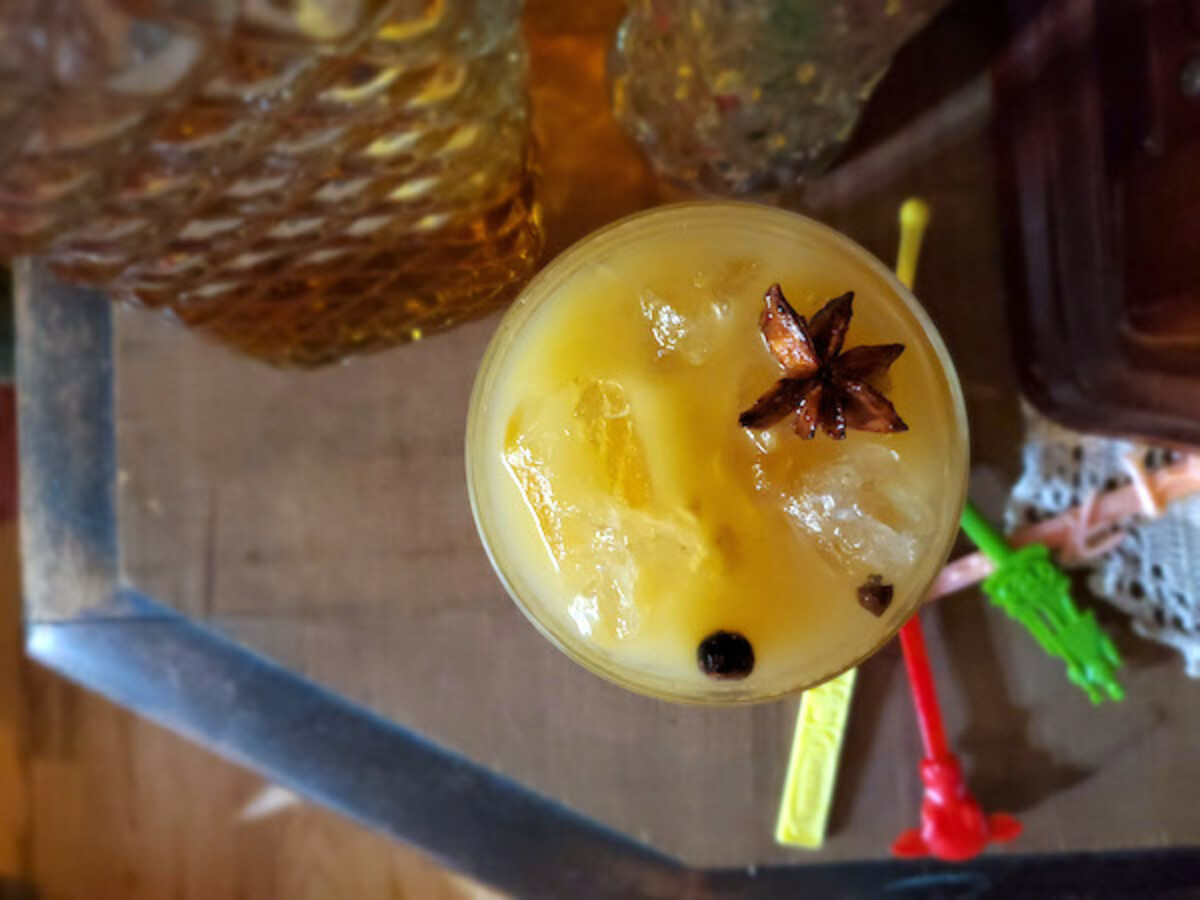
Brined Apples
Russian brined apples are one of the more exotic ways to preserve apples, at least by modern standards. Whole apples are placed in a crock or barrel that’s lined with rye straw, and then a salt brine is poured over the top. A bit of rye sourdough starter is added for cultures, and then the whole barrel ferments throughout the winter months.
I first saw the technique on a traditional foods site called Beets and Bones, notes that:
“Brined (or lacto fermented) apples are as essential to Russian food tradition as kvass and rye bread. As all fermented foods, it was a way to preserve nutrients from harvest to harvest. Of course, times have changed, and wax-covered neon-in-February fruit made its way to the Russian markets too. But folks still carry on the ages-old tradition, if not with some modifications.”
I know, it sounds strange, but these are next on my list to try. The finished apples are said to have a sweet/salty/tangy taste, and when you cut them the flesh is nearly transparent after the curing process.
Apple Kraut
Sauerkraut and apples is a classic fall combination, especially in german cooking. Toss in a few sausages or a pork loin and you’ve got a satisfying fall meal.
Using sauerkraut WITH apples is tasty, so how about making sauerkraut FROM apples instead?
Including apples in homemade sauerkraut creates wonderful flavor, and is a perfect way to preserve apples. Try any of these kraut recipes including apples:
- Red Cabbage Apple Ginger Kraut ~ Food in Jars
- Spiced Apple and Cabbage Kraut ~ Honest Cooking
- Apple Spice Kraut ~ Fermented Food Lab
Other Ways to Preserve Apples
Besides traditional recipes, canning recipes and fermentation, there are still plenty of creative ways to preserve apples. They don’t neatly fit into a category, but here are even more apple preservation methods!
Apple Cordial, Apple Brandy & Apple Moonshine
Preserving apples in alcohol creates boozy-infused apple concoctions, and there are so many ways it can go. We make an apple cordial each year by infusing flavorful Wickson crabapples in vodka and then sweetening with a hint of simple syrup.
Infuse apples with brandy for apple brandy, or start simple with everclear for an old-fashioned apple pie moonshine.
In the end, the apples are strained out to finish the cocktail, but they’re still delicious. Use them to top ice cream or cakes all winter long, and no part goes to waste.
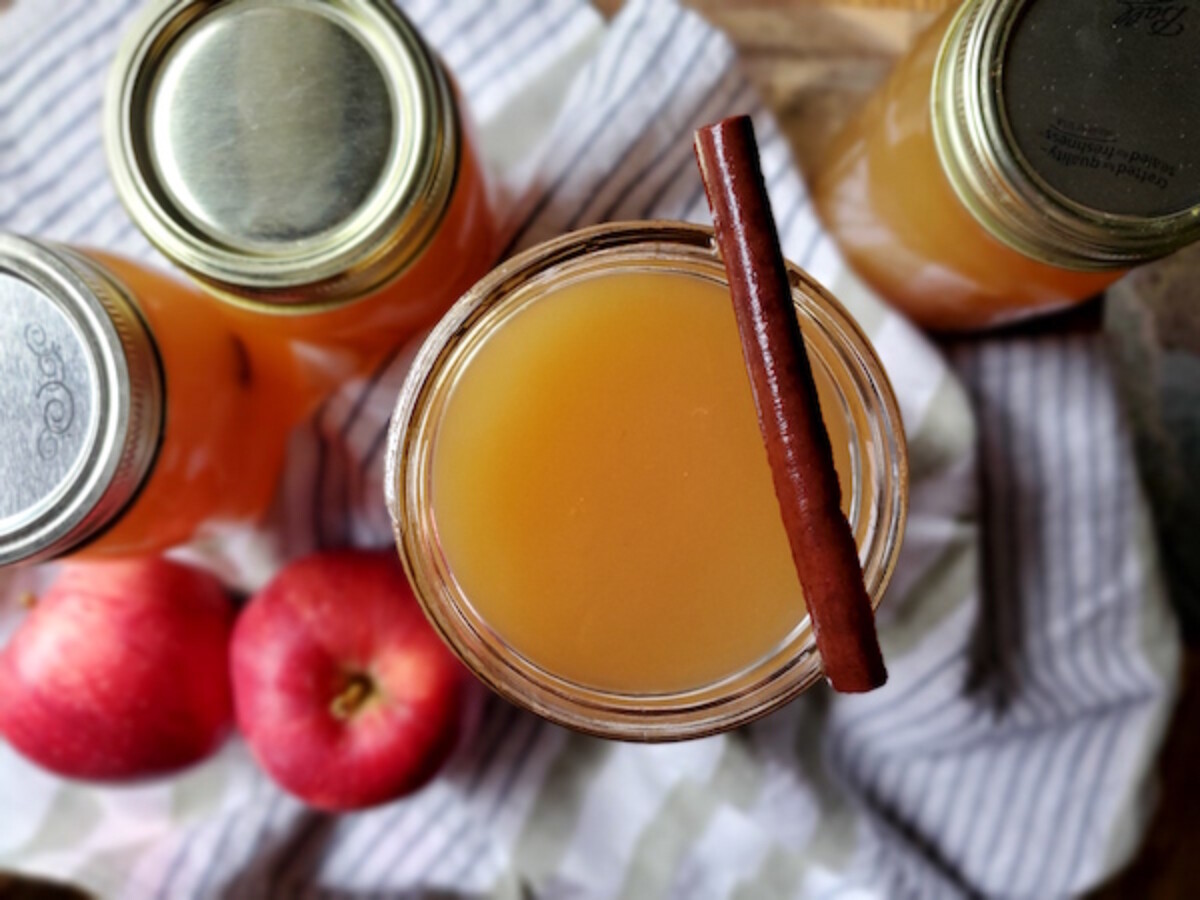
Freezing Apples
Freezing apples is an easy way to have apples ready at a moment’s notice. The quality is better if you blanch them ahead of time, but it’s still possible to use a simple method for freezing apples without blanching.
Just treat with lemon juice and arrange the slices on a cookie sheet so they don’t freeze together into a block. Once frozen, place all the slices in an airtight container for long-term freezer storage.
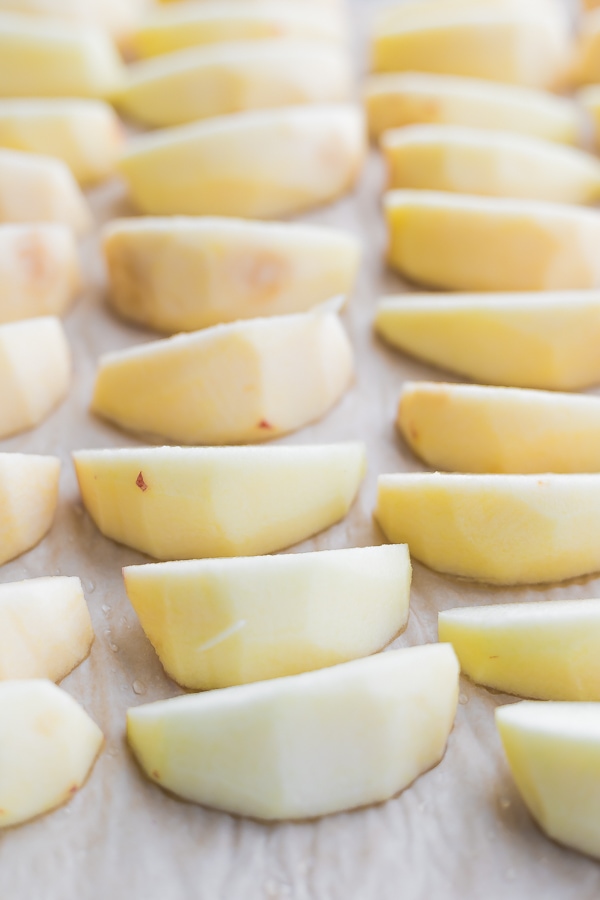
Apple sugar
Many of the apple preservation recipes included thus far involve pressing the apples. What about all the leftover pomace?
My friend Susan had an amazing idea to dehydrate the pomace to make “apple sugar” for flavoring and sweetening. There’s still a good bit of flavor left in the pomace after pressing, and while we generally feed it to our animals, taking some for homemade apple sugar is a delicious zero-waste cooking idea.
Apple sugar can be used to sweeten and flavor beverages, or even better, sprinkled over oatmeal!
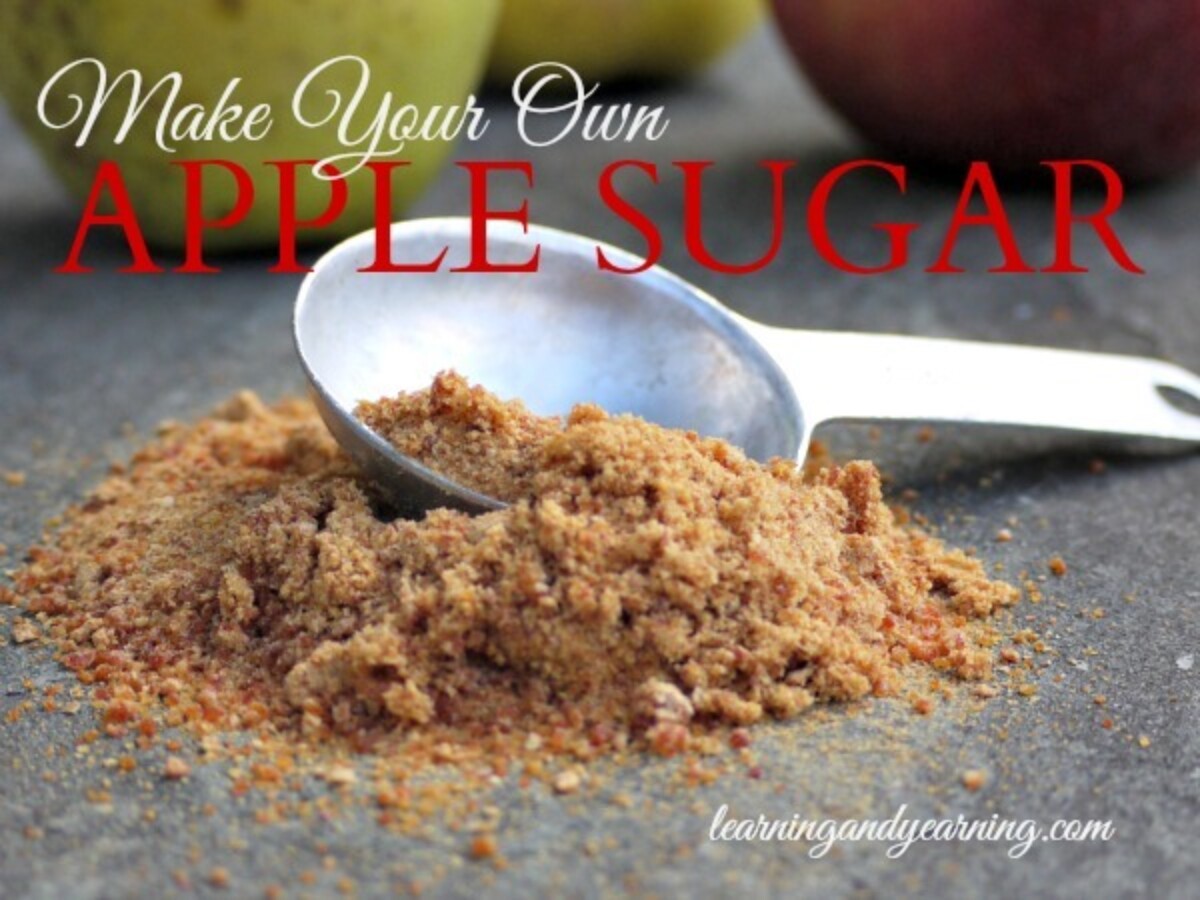
Apple Cider Caramel
I was really inspired by Susan’s apple pomace sugar, and I wanted to see if I could make my own apple sugar from apple cider instead. As I’ve already mentioned, cider syrup or boiled cider was a traditional apple preservation technique that’s not too different from maple syrup. If you cook maple syrup a bit longer and then whip it in a mixer, it crystalizes into maple sugar.
I thought, why not try cooking cider syrup down further, then whipping it to try to make granulated apple sugar.
After trying a number of methods, my apple sugar experiment was unsuccessful…at least in producing granulated apple sugar. Instead, I succeeded in making one ingredient apple cider caramel sauce.
The caramel sauce was amazing, and I was really happy to discover yet another way to preserve apples in a compact, sweet and flavorful sauce.
Look at that sweet spoonful of failure right there…
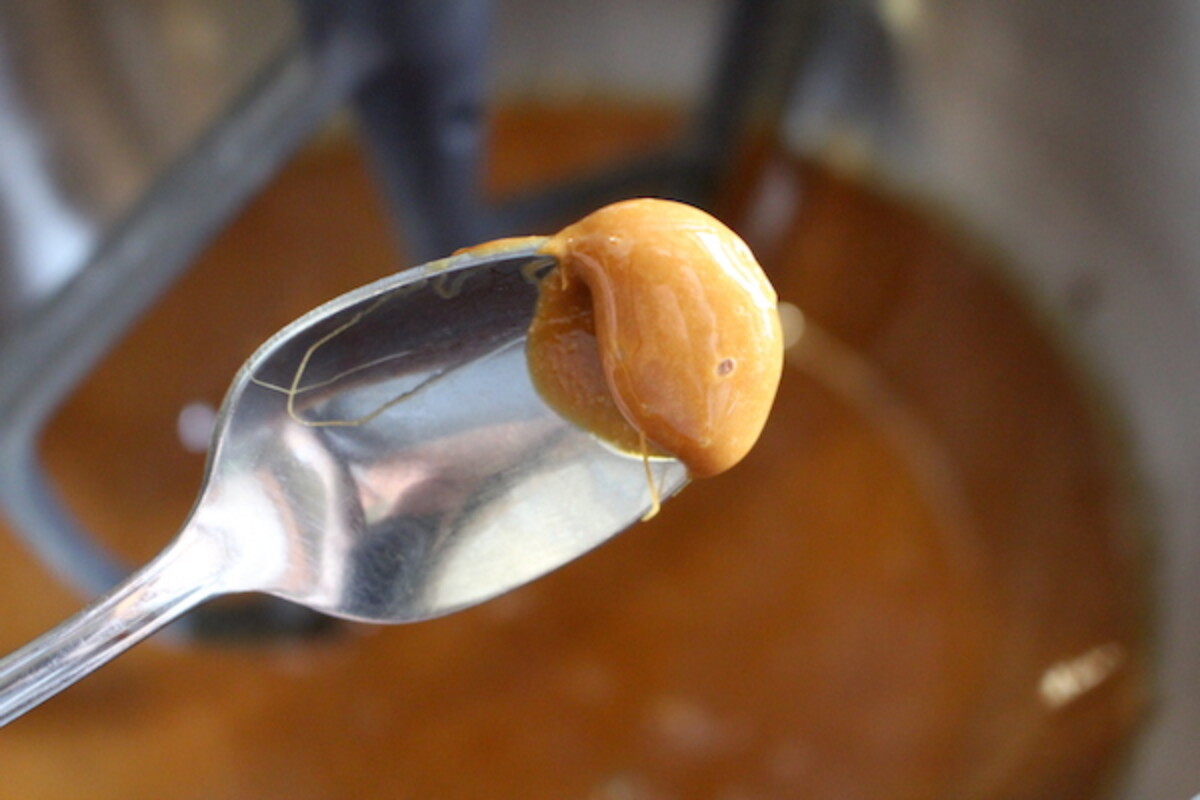
Freeze Dried Apples
A bit space-age, but home freeze dryers are becoming more popular as a food preservation method. Simply slice the apples and pop them in the freeze dryer for a full cycle and the machine does the work.
Freeze-drying preserves texture much better than either freezing or drying alone, and the rehydrated apples make a delicious pie that you’d never guess was freeze-dried.
This is the best long-term apple preservation technique, and freeze-dried foods maintain quality for 25 to 30 years!
I actually came across a #10 can of freeze-dried apples at an estate sale. It was 17 years old and I was pretty ecstatic to get to try “antique” preserved apples. They were great just out of the can as a snack, and they rehydrated in just a few minutes for apple pie.
Food Preservation Inspiration
Feeling inspired to preserve some apples? If I’ve missed your favorite method, by all means, let me know in the comments below.
If you have other things to preserve this fall, keep reading my friends…
- 30+ Ways to Preserve Eggs
- 20+ Ways to Preserve Lemons
- Salt Cured Duck Breast (Duck Breast Prosciutto)
- Historical Farmhouse Cheddar Recipe from the 1800s
- 100+ Canning Recipes
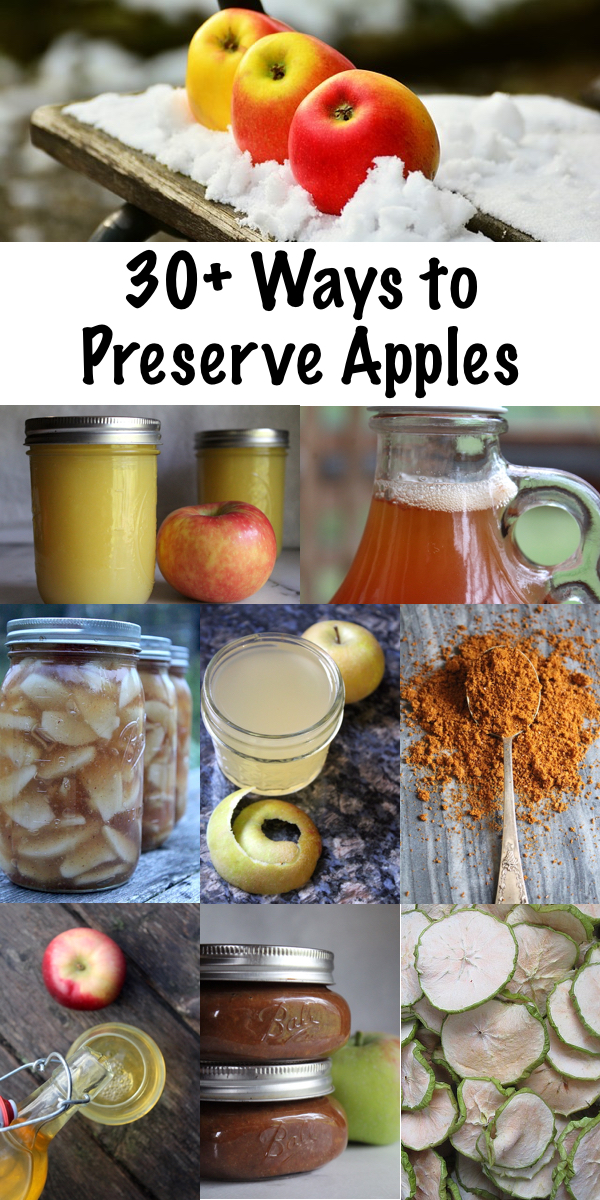

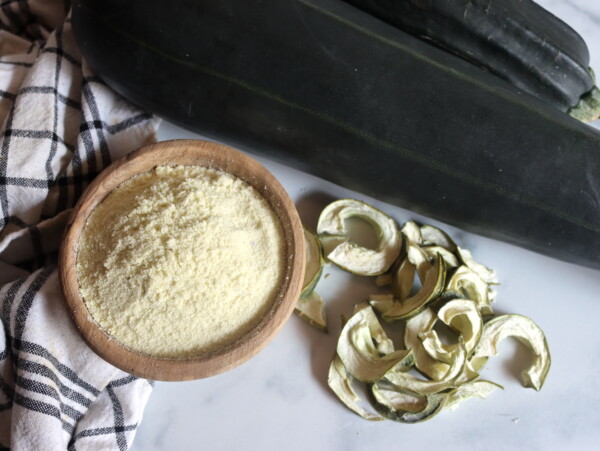












We have apples, apples, apples this year. And only 2 of our 7 trees have ripened. So far I have been processing Gravenstiens and one of the two Honeycrisps. This will be the first year our Newton’s Pippen will produce though, in the past, a neighbor shared Newton’s Pippens with us. I have already canned apple jam, plum/apple jam, pluot apple jam, lemon apple marmelade, an onion/apple relish and a wonderful apple salsa. After reading this post I am inspired to can apple pie filling (tomorrow’s project).
Thank you for posting all of these wonderful ideas.
I’ll be putting a link to this post in my blog some time in the next week.
You’re very welcome. We’re so glad that you enjoyed the post.
Thank you for the canning recipes. I’m putting everything on a thumb drive as it would take a boatload of paper to print it all out. I have labeled the thumb drive: INDEFINITE, as in GRID DOWN, NOT GOING BACK HOME, etc.
You’re very welcome. We’re so glad you enjoyed the recipes.
Is it possible to freeze apple slices and later use them to can apple pie filling?
I am not sure that the texture of the apples would hold up to the freezing and canning process.
Where is the Pinterest button? Why can’t I pin this post? How do I save this for later?
There should be a pinterest button on there? I’ll look into it…
Two more: Appalachian apple jam. Steam good cooking apples in a minimal amount of water until tender and mash like potatoes. Add sugar and cinnamon to taste and cook, stirring constantly, until thick, then jar up and process 20 minutes. Put this on a biscuit and you will wonder how you ever lived without it.
German spiced red cabbage uses apples, brown sugar, cloves, ginger, allspice and a dash of cider vinegar. I have canned this in a water bath and it keeps fine.
Nice! Thank you so much for those =)
this couldn’t have come @ a better time Ashley. we have an ancient apple tree that produces tons of delicious apples & I’ve been drying, making butter & sauce & eating a lot but still need to use the rest. I will try your apple pie filling & chutney this week & post a comment after. appreciate the effort you put in to this post.
Wonderful Suzanne, so glad it helped!